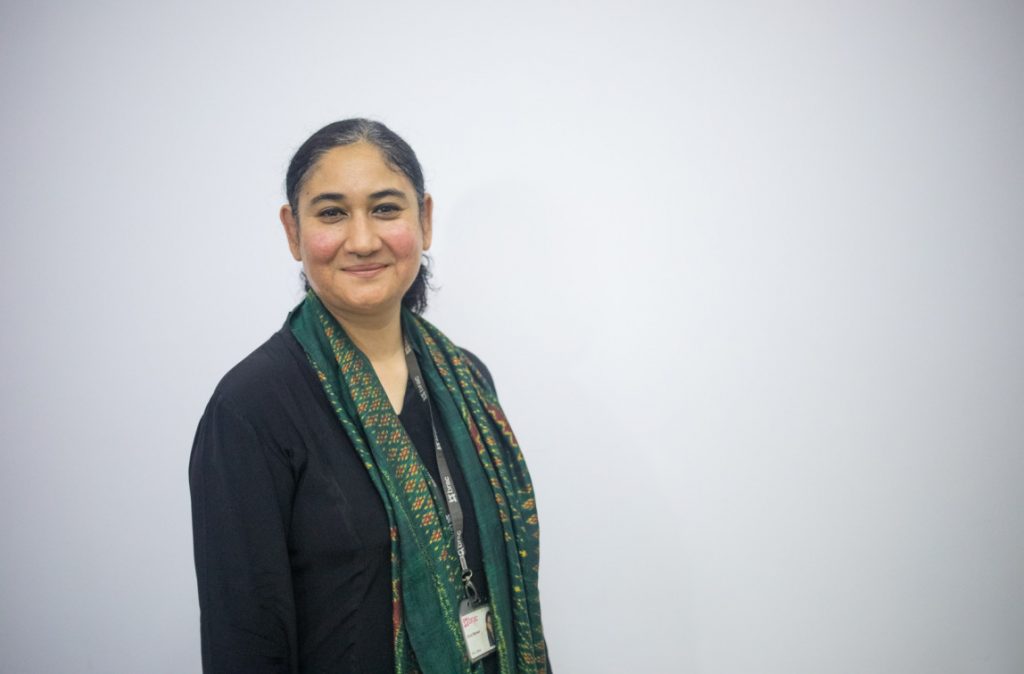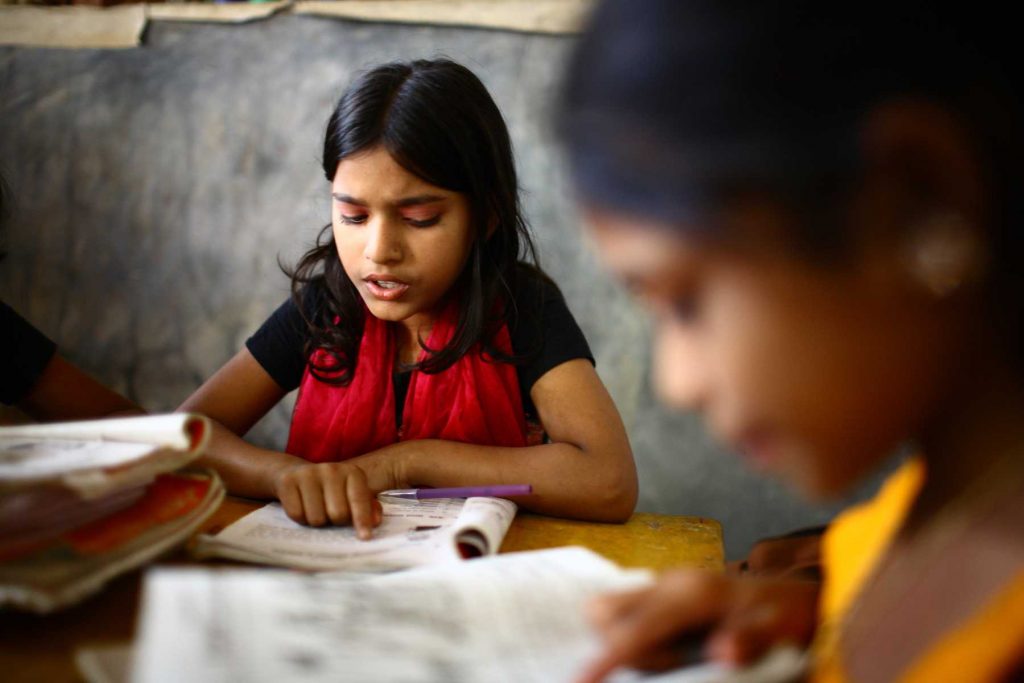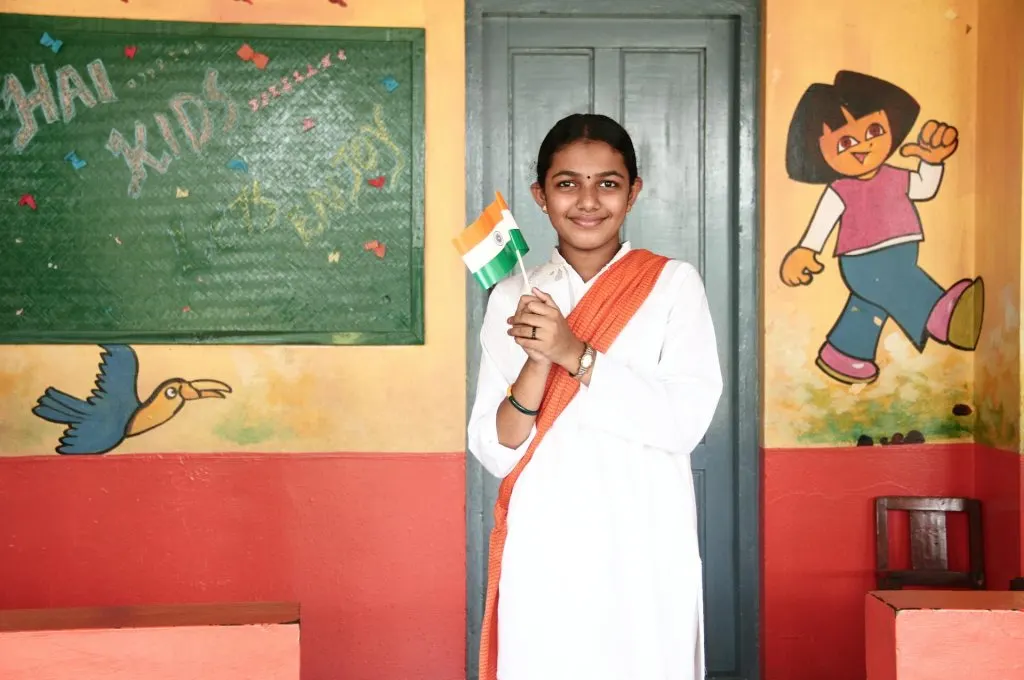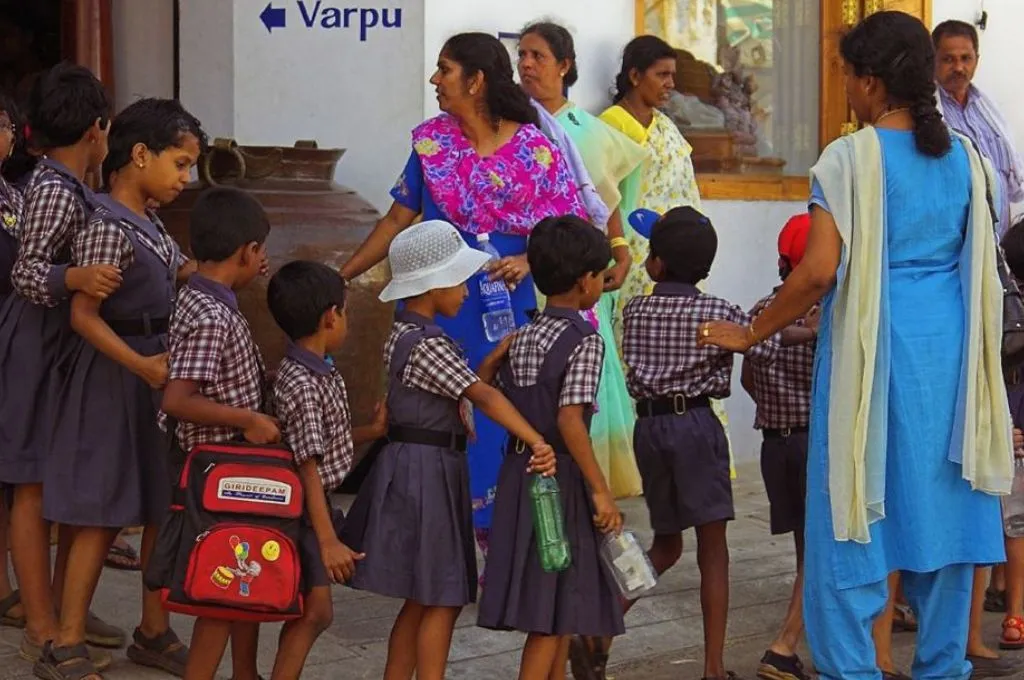Erum Mariam is the Executive Director of BRAC IED (The Bangladesh Rural Advancement Committee Institute of Educational Development), BRAC University, in Bangladesh. She has extensive experience of scaling up education interventions and was involved in the expansion of BRAC’s non-formal primary schools in the 1990s.
In this interview with IDR, Erum tells us about why it is important to put children at the centre of education programmes and systems, how this builds ‘resilience’, and what this buzzword means to her. She also emphasises the critical role that frontline workers and communities play in times of crises, and how they are the real drivers of change.

Picture courtesy: Erum Mariam
At BRAC, you design and implement education programmes for the poor. What are some of your learnings from this?
BRAC started its work in education programming in 1985, when poverty was one of the primary vulnerabilities in Bangladesh. Keeping this in mind was at the core of our programming, because of the number of children who were dropping out of school due to poverty. School retention rates were very low—about one-third of children were dropping out of the primary education system.
We also realised that when we work with children who are vulnerable due to poverty, we need to consider the intersection of gender with poverty. There were, and are, a host of cultural reasons due to which girls drop out of school. Whether in India or Bangladesh, parents often want to invest more in boys. Along with cultural reasons, there are also issues of accessibility that force girls to drop out. If schools are located far away, or if they have predominantly male teachers, parents often do not feel comfortable sending their daughters to school because of the lack of safety and accessibility.
We believe that people in poverty can solve their own problems, we are simply there to assist them.
We then did a lot of research around other manifestations of vulnerability when designing our educational model. These include children with special needs and the stigma they faced, children from ethnic minorities who were culturally and linguistically different, and other aspects of identity that affect access to education.
So, while we started out with poverty and gender as two key factors to consider, our conceptualisation of vulnerability grew to include other dimensions. Even within poverty, we need to develop an understanding of poverty. It is not a uniform experience. What are the choices that are available to each family? What has happened in a child’s life? Going deeper to understand some of these questions is a part of the ethos that needs to be built into education programmes. At the core of this ethos is respect. You cannot try to understand vulnerability without this.
We believe that people in poverty can solve their own problems, we are simply there to assist them. We don’t use a ‘deficit lens’, we don’t see people who face poverty as being have-nots. Solutions, ideas, and competencies are within people themselves.
Related article: Rethinking learning
Can you tell us about the role that communities themselves have played in advancing education?
You cannot bypass the power of communities, it is the biggest driver of change.
We’ve found that including people from the community—particularly women—has significantly helped our programmes. We choose women from the community to be teachers, even if they don’t necessarily have the education qualifications that would ordinarily be required for the public education system. We do this because of the level of comfort that children feel with teachers from their own communities.
The resilience with regard to self-confidence and self-esteem that comes from even just completing primary education is immense.
Our education programme is centred around a ‘second chance’ model, where we work with school dropouts. So, some of these children join when they are older, and have faced certain difficulties that may be hard to understand for an outsider. Women from the communities, however, are better equipped to understand these children, and are also supported by other members of the community—parents and teachers who form our school management committees. They are the ones who take the school forward. The well-being of their community lies in their hands. Our staff just help them organise.

We need to assess the various barriers and vulnerabilities that children face, and then work towards creating targeted approaches for them|Picture courtesy: Wikicommons
Many children are first generation learners, and there are cyclical patterns due to which they do not come to school or drop out entirely, and they often require additional support. With community support and involvement, they get a second chance. The resilience with regard to self-confidence and self-esteem that comes from even just completing primary education is immense. We all recognise that education is hugely important. It opens up possibilities for the future, and the resilience and opportunities that come with this.
Resilience has become a buzzword of sorts, particularly in the context of the pandemic. What does this word mean to you, in the context of education?
Traditional education focuses only on academics, but education is much more important than that for children. It takes a child through a process of socialisation, of learning, and of socio-emotional development. While socio-emotional learning builds a child’s confidence, self-esteem, empathy, kindness, compassion, and more, a student’s environment also contributes to motor development, cognitive development, and language development. Skills related to problem-solving or conflict resolution also begin to get honed. Children can be taught how to socialise and how to regulate their emotions, which helps them become resilient. The ability to overcome problems or trauma, is crucial to help children to learn—especially those that are poor and vulnerable.
I also want to underscore that for children, meaningful relationships with teachers are also incredibly important. All of these factors influence the child’s well-being, and resilience is so deeply tied into well-being.
Related article: Socio-emotional learning: How to get it right
Due to the pandemic, more children are going to fall behind. How can we prevent this from happening, particularly for children who are marginalised?
We need to take stock of what children and their families are grappling with. A lot of children will probably have to start working to support family incomes. Frontline workers are key to helping us develop this understanding. They are the ones building a rapport with children, teachers, and families. Their presence is also reassuring to the community in times like these. They can provide support and handholding when needed. So, to support communities in times of crisis, we need to empower and support our frontline workers.
We will also need to employ a targeted approach to bring children back into schools. We need to assess the various barriers and vulnerabilities that children face, and then work towards creating targeted approaches for them. Children need to be put at the centre of our systems, but each child’s requirement is different.
We might need to explore non-formal models and blended mechanisms that combine face-to-face instruction and low-tech instruction.
Therefore, flexibility will be crucial to helping children return to education. Education programmes, both state and non-state, need to set up stronger safety nets programmes for children and families at the margins. We might need to explore non-formal models and blended mechanisms that combine face-to-face instruction and low-tech instruction. While schools are closed and even after they reopen, we need to make an effort to stay connected with children and families through telecommunication. This will keep them motivated and ease the transition when schools reopen.
The crisis is also causing a lot of mental health problems for families—and we can engage frontline workers to give these families psychosocial assistance and to convince parents to send their children back to school.
From assessment, to design and implementation, we need to account for the many barriers that children may be facing. We cannot work under the assumption that once schools open, children will return. School systems need to reach out to vulnerable populations. It cannot be the other way around.
Related article: The relevance of resilience during disasters
What else do we need to focus on, as we respond to this crisis?
This is an opportunity to rethink and redefine what education means. Traditionally, we define education in terms of how it works for a central administration. But education structures, processes, and content need to be designed and tailored to children’s vulnerabilities. People who work in education, especially with vulnerable children, need to understand the nature of these vulnerabilities; without this understanding, education cannot be made meaningful for these children.
Education structures, processes, and content need to be designed and tailored to children’s vulnerabilities.
We also need to understand that people, especially poor people, have the capacity to transform their own lives. We only facilitate this process; we do not make the change happen. We need a deep respect for children, their parents, and their circumstances to design programmes that help them. This was the vision that BRAC had when we developed our non-formal model in which teachers were equipped with the skills they needed to become change-makers in their own communities. We know that people’s capabilities are endless. Sometimes they just need a little help in using their own strengths to change their circumstances.
At the AVPN Virtual Conference 2020, Erum Mariam spoke about the barriers to education created by the COVID-19 pandemic and the measures that can be taken to overcome them.
—
Know more
- Learn about the impact of COVID-19 on children around the world here and here.
- Read about the impact of the lockdown on students in India.
- Read about how the pandemic has exposed India’s digital divide.






